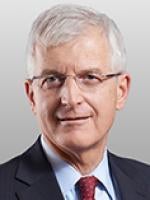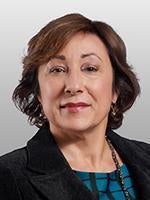In reaction to the global economic slowdown and commodity price collapse, Saudi Arabia’s leaders have made virtue of necessity in announcing plans for far-reaching economic, educational and related reforms. They aim to innovate and diversify the economy of the Kingdom. The goal is faster growth and job creation, especially in the private sector, in order to meet the high aspirations of its very young population and secure a prominent role in the region and beyond.
In April 2016, with strong support from his father King Salman, 30-year old Deputy Crown Prince Mohammed rolled out the “Vision 2030” policy platform[1] and announced that a concrete National Transformation Plan (NTP) to help implement the plan would soon be launched. The Council of Economic and Development Affairs (CEDA) has approved the final draft of the NTP, which is to include implementation steps on a number of sectors covered by Vision 2030. The Saudi cabinet is expected to approve the NTP this week, and further details are to be provided by specific Ministries in press campaigns. With global oil prices now half of their mid-2014 levels, the Vision focuses on channeling the Kingdom’s massive oil-related wealth to move the economy into new, high value-added activities. At the same time, proposed reforms would cut inefficient public spending while investing in the skills, institutions and major policy changes needed to facilitate private investment and job creation (including for women) and to drive private sector-led growth over the next 15 years.
Saudi Arabia has achieved a per capita GDP of almost $25,000 per year and annual GDP of around $750 billion. The proposals set out in the Vision 2030 intend to channel its accumulated wealth into diversified investments at home and abroad, including in the Saudi people themselves, to create a more vibrant and prosperous society underpinned by private enterprise, nimble institutions and a highly-skilled labor force. Here are some of the realities that motivate the press for sweeping change:
-
The volatile oil sector still comprises nearly half of the Kingdom’s GDP, and accounts for over 75% of all government revenue, and some 80% of Saudi Arabia’s export earnings;
-
Over two-thirds of Saudi nationals who work are employed in the public sector, versus the private sector, which produces perhaps 40% of the Kingdom’s GDP;
-
Yet the IMF and others estimate that expatriate migrants comprise over a quarter of the Kingdom’s population, as many as 11 million people, and make up a major portion of the labor force, including as much as 80% of all private sector employment[2];
-
Economic growth is less than 2% per year and unemployment in the Saudi labor force stands, conservatively, at 11.6%; Saudi labor force participation is estimated to be just 54% (18% among women);
-
The 2015 budget deficit ballooned to nearly $100 billion even as foreign exchange (FX) reserves shrank by well over $100 billion (to just over $600 billion) to cover public sector spending of over $250 billion — 2016 will also be challenging financially;
-
The Saudi government has already begun to rationalize spending and contracting by its Ministries, including to clear arrears to contractors, but tight fiscal constraints have driven the Kingdom to borrow internationally; the financial press has reported that some contractors may be asked to be paid at least in part in Saudi bonds[3];
-
At the same time, the Saudi population and labor force is still growing rapidly (over 5% per year), outpacing job creation by a wide margin, and;
-
Meanwhile, well over half of the Saudi population is under 30 and youth unemployment is approaching 30 percent.
King Salman, Prince Mohammed, and his closest advisors recognize that the present situation in Saudi Arabia is financially and economically unsustainable. The over-arching goal of the new Vision 2030 is to make Saudi Arabia an investment “powerhouse” and a commercial and logistics hub for three regions — Africa, Asia and Europe. Fundamentally, the 2030 plan involves diversifying the economy away from oil and towards a wide array of other productive activities (e.g. mining, tourism, health innovation, infrastructure development and services, renewable energy, defense sector activities, agriculture, culture and entertainment).
A core element is a proposed transfer of a portion of Saudi Aramco’s assets into the Public Investment Fund, which is to be repurposed as a sovereign wealth fund that invests in productive activities at home and abroad. The Kingdom seeks to turn the new fund, to be headquartered in the King Abdullah Financial District in Riyadh, into a $2 trillion global investment vehicle focused on high returns, including in partnership with private equity. Saudi Aramco — already perhaps the world’s most valuable company — is to be further expanded into a diversified industrial/economic conglomerate. Initially, up to 5% of Saudi Aramco’s assets are expected to be offered for public sale in 2017 or 2018 in order to mobilize private investment to help meet the new goals. This IPO is expected to establish the value of the company at some $2 trillion.
In a move that may facilitate a successful IPO and attract investment, the Kingdom also proposes to go beyond last June’s steps to open the Tadawul (its stock exchange) to foreign investors. The Capital Market Authority (CMA) announced on May 3, for example, plans to scrap the 10 percent limit on the combined ownership by foreign institutions in the market’s entire capitalization, to double the amount individual investors could hold in a listed company to 10 percent, and to lower the minimum asset holding to qualify as a foreign institutional investor from $5 billion to $1 billion. The Saudi government also seeks be included in the MSCI Emerging Market Index (which captures the representation of large and mid-capitalization equities in specific emerging markets), on which many institutional investors base their investments, in 2017. MSCI is expected to decide in June whether to consider Saudi’s inclusion. In coming weeks, the Saudi government also will launch its first global bond issuance of some $15 billion, and meet with potential investors, in part to advance its 2030 Vision push to attract new private sector partners.
Vision 2030 also contemplates boosting and facilitating the role of the private sector (both domestic and foreign) from 40 to 65 percent of the economy, improving the business climate, promoting small and medium-sized enterprises, and making government more efficient and accountable. A new military/defense holding company also is to be created to facilitate development of a domestic industry. Jobs and economic sectors will continue to be “Saudi-ized” to employ more Saudi nationals, even as the visa system is to be automated, simplified and streamlined, and potentially supplemented by a green card system. Stronger international economic partnerships — including with the United States — is a complementary strategic goal.
The Vision also includes expanding and improving the tax base and system. Prince Mohamed Bin Salman, the Finance Ministry and various Saudi officials have explained[4] that steps are likely to include a VAT (consumption) tax, new excise taxes on tobacco and soft drinks, public service fees, some privatization of State assets and a fee-based “green card” system for foreign residents. The Vision also contemplates an overhaul of the education system, to ensure that it deliver the skills essential to innovation, entrepreneurship and productivity. The U.S. has played an important role in efforts to modernize the skills of young Saudis — many thousands of Saudi students have been, and are being, trained in the U.S. U.S. investment and experience could well be a productive element in realizing the Vision 2030 goals to enhance local educational institutions.
Already, the kingdom had embarked on an ambitious program to build a modern, knowledge-based economy, including through its pre-existing program to develop four Economic Cities in Rabigh, Hail, Madinah and Jazan. These science and technology centers are complemented by the flagship King Abdulaziz University of Science and Technology near Jeddah. The Economic Cities, in which investment fell short during the global recession, are to be restructured under the auspices of the Economic Cities Authority (ECA). The Vision includes plans to further ease regulations and trade provisions, and establish “international standards” to support the Kingdom’s goals for the Economic Cities and national revitalization. The Cities will seek to attract and develop modern technology, management skills, corporate governance and advanced industries to help reduce the Kingdom’s heavy dependence on oil and gas. The Saudis will encourage investment and expertise from the United States and elsewhere in enhancing the Cities.
Many acknowledge that Vision 2030’s proposed reforms will be challenging, both politically and practically. Yet, some major changes have begun. In December 2015, the Saudi government announced deep cuts in subsidies on power, petroleum products and water. In January they raised gasoline prices by 50 percent. Fees for now-free health and education services are under serious consideration. Not surprisingly, there has been pushback, including earlier in 2016 when water bills went up dramatically. Still, on May 7, 2016, King Salman issued sweeping decrees replacing top ministers and restructuring government bodies. Many of the changes align with Vision 2030 goals.
Oil Minister Naimi, who had been in place since 1995, was replaced by a younger Khalid al-Falih, former chairman of Saudi Aramco, who will head the new Ministry for Energy, Industry and Mineral Resources. The decrees also changed the head of the central bank, renamed and combined ministries, and put new officials in charge of several Ministries. More details about the NTP are scheduled to be announced by June (perhaps before Ramadan begins on/about June 6). This information will help us all to more accurately assess Saudi Arabia’s specific policy commitments and goals, and the opportunities and challenges they entail.
The ambition reflected in the Vision 2030 proposals is tremendous and could present significant opportunities for Saudi Arabia and its people, for the region, and the world. But its effective implementation will require the Saudi economy to move away dramatically from dependence on oil and the Saudi people to accept that the State no longer will meet virtually all their needs. Saudi markets must be opened, its institutions and workplace rendered nimble, inclusive and responsive, and foreign investors convinced they are welcome. This will take years to unfold, but indications of the intensity of the effort will become clearer as further actions are taken throughout 2016.
[1] http://english.alarabiya.net/en/perspective/features/2016/04/26/Full-text-of-Saudi-Arabia-s-Vision-2030.html
[2] http://www.mckinsey.com/global-themes/employment-and-growth/moving-saudi-arabias-economy-beyond-oil, https://www.imf.org/external/pu, http://www.imf.org/external/pubs/ft/wp/2015/wp15191.pdfbs/ft/scr/2015/cr15251.pdf
[3] http://www.bloomberg.com/news/articles/2016-05-18/saudi-arabia-said-to-consider-paying-contractors-with-ious
[4] http://www.reuters.com/article/us-saudi-budget-idUSKBN0UB10D20151228 http://www.bloomberg.com/news/articles/2016-04-04/biggest-ever-saudi-overhaul-targets-100-billion-of-new-revenue





 />i
/>i
